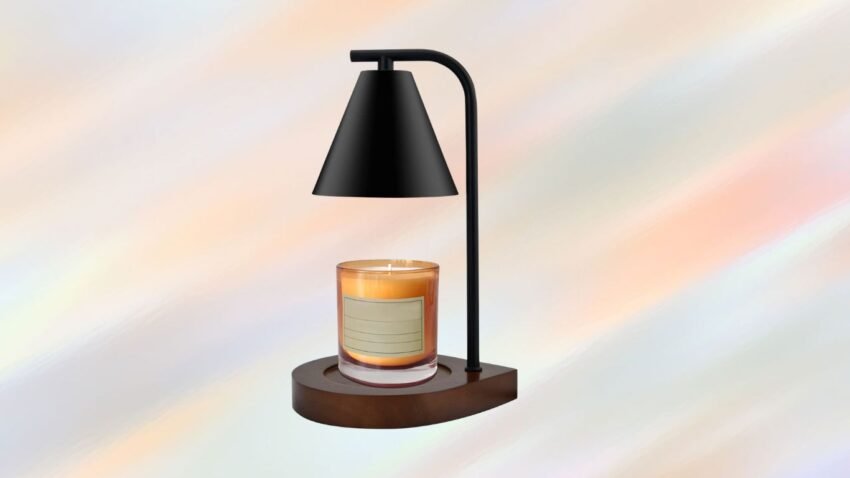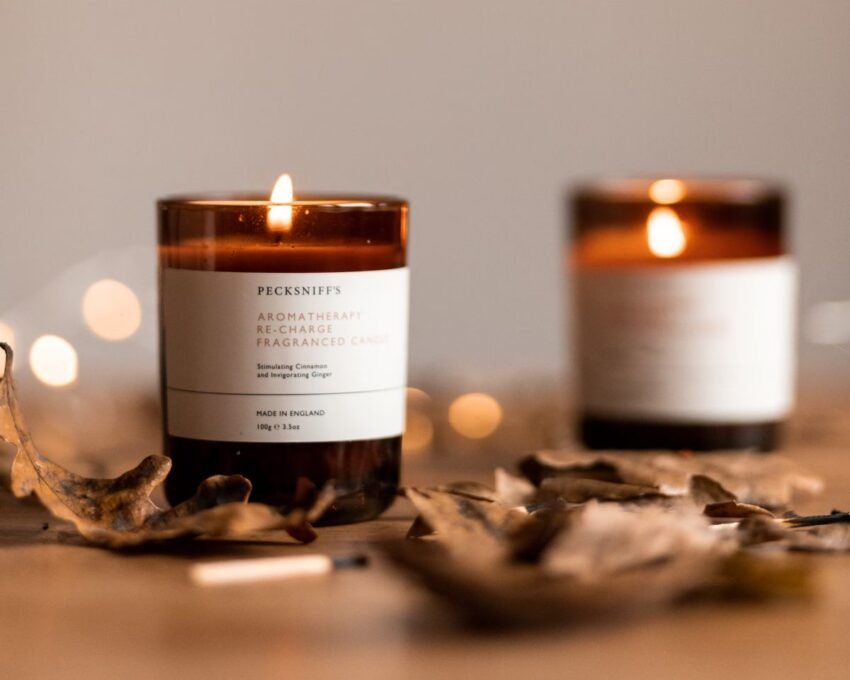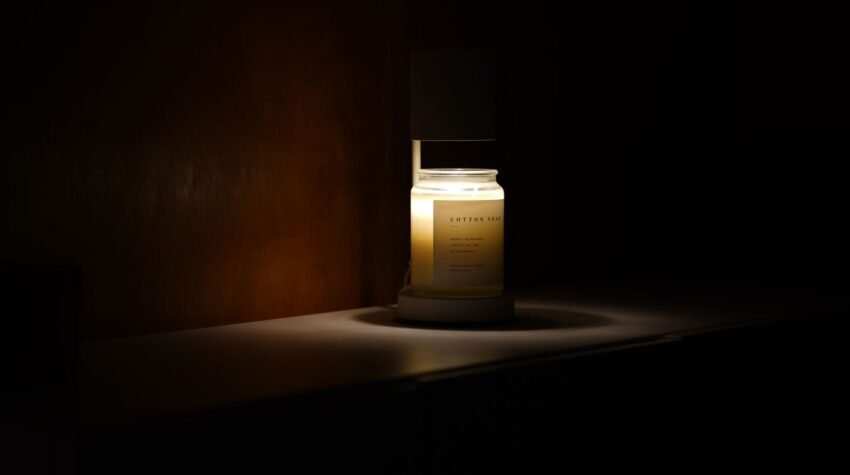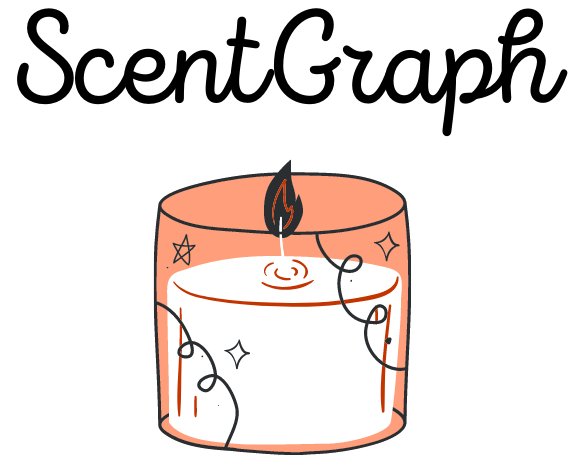Scented candles are seeing an exponential increase in popularity. Just like a rising tide lifts all boats, the popularity of scented candles is also increasing the use of associated accessories like candle warmers.
You might have heard of these warmers or even seen them on some TV shows. So, what is a candle warmer, and what purpose does it serve?
Simply put, a candle warmer is an electric device that helps release the fragrance from a scented candle without the use of an open flame. A candle warmer is flameless and doesn’t burn the wax. It simply warms up the wax enough to release fragrance.
Now that we have a good idea about candle warmers, let’s get to the nitty gritty.
How Do Candle Warmers Work?
Candle warmers are electric devices. Conventionally, they include either a lamp or a heating plate. Whatever heating method is used, what a candle warmer does is get the wax in a scented candle hot enough to melt.
As the wax melts, the fragrance oil in the scented candle gets unlocked. Thanks to the molten wax, the fragrance oils start diffusing and releasing their fragrance. Users don’t need to light up or burn the candle for the candle wax warmer to work.
Candle warmers provide a flameless way to use scented candles.
Another thing to keep in mind here is that candle warmers work with candles inside a container. As the candle wax melts, the container ensures that the wax doesn’t drip or flow out of the candle.
There is a wide variety of materials used for candle containers. In most cases, the material of the candle container isn’t an issue when using the warmer.
However, some materials, like thick concrete containers, might pose a problem. They can prevent the candle wax from sufficiently heating up, especially over plate warmer type candle warmers.
The Two Main Types Of Candle Warmers
As discussed in previous sections, there are two types of candle warmers. Now’s the time to get to know them better.
1. Hot Plate Type Candle Warmer
Hot plate candle warmers were perhaps the first on the scene. These warmers employ a small disc, upon which the candle is placed. When powered on, this disc gets hot and transfers the heat to the candle via conduction.
This results in the candle wax melting. Given the way these candle warmers work, it is the base of the candle that melts first. Eventually, it gets hot enough to melt the entire candle. The candle gives off a good, strong, and lasting fragrance.
Since this candle warmer uses the entire candle, users don’t have to worry about scraping layers of used wax. The entire candle is good as long as it gives off scent!
Hot plate candle warmers do look a lot like coffee warmer plates. In fact, the system is pretty much the same, so many users do tend to use candle warmers as coffee warmers as well!
2. Lamp Type Candle Warmer

Candle lamp warmers or lamp-type candle warmers are the more aesthetically pleasing option. These look quite similar to desk lamps. Usually, this type of candle warmer has a curved neck with a domed lamp shade. The idea is to get the lamp right over the candle.
Generally, this candle warmer features a base, which helps stabilize the lamp and also provides a surface to place the candle.
The lamp, or rather, the bulb is the part that does most of the work here. It provides light, which gives this candle warmer its unique ambiance. It also provides heat, which melts the wax and releases the fragrance.
The bulb generates enough heat to melt the top layer of the candle wax. It looks very similar to the wax pool created by most candles while burning. As the wax melts and gets warmer, it starts releasing fragrance.
Unlike plate-style candle warmers, lamp-type warmers don’t melt the entire candle. So, there’s a little more work for the user.
You might have to dispose-off the top layer of the wax once it stops giving scent. This will open up a new, fragrant layer of wax and the candle warmer can continue with its role.
Many candle lamp warmers also offer additional features like dimming lights and timers.
Highlights: The Key Characteristics Of Candle Warmers
Here are a few quick points to know about candle warmers, and how they work.
- Candle warmers are electric devices and are flameless.
- Candle warmers are available in two types – candle lamp warmers and hot plate type candle warmers.
- Generally, candle warmers work with scented candles in containers.
- Lamp candle warmers heat the top layer of candle wax through the use of a bulb (incandescent bulb, halogen bulb, etc.)
- Hot plate style candle warmers heat the base of a scented candle container to melt all the wax in the candle.
- Expect the candle container, scented wax, and candle warmer to get hot during use.
- Always place the candle warmer on a flat, sturdy, scorch-proof (or protected) surface.
- Keep candle warmers away from children, pets, or anyone who could unwittingly knock them off.
- It’s best not to leave candle warmers unattended.
Comparing Candle Warmers With Similar Methods
Candle Warmer VS Wax Warmer
Generally speaking, candle warmers fall under the wider category of wax warmers.
There is barely a hair of a difference between a candle warmer and a wax warmer. Even then, the difference is more semantic than actual. For most uses, candle warmers and wax warmers can be used interchangeably, often with slight to no modifications.
Essentially, both of these have the same function. They melt the wax to release fragrance, without burning the candle.
The larger difference basically comes with how we define wax warmers vs candle warmers.
When dealing with candle warmers, the defining characteristics are that the device works off electric power and can work with a full candle in a container without requiring modifications.
A wax warmer can work off electric power or might use a heat source like a tealight to melt wax. Generally, wax warmers have a bowl or a similar attachment to hold the wax tarts as they melt. It’s unlikely for wax warmers to use a full candle.
However, these differences are easily overcome. You could put wax melts in a bowl or cup and they would work just fine with a candle warmer.
Similarly, users can put the wax from a scented candle into a wax warmer and enjoy the fragrance without lighting the candle.
In fact, this is one of the best ways to use leftover wax from a scented candle. Of course, it doesn’t necessarily need to be leftover wax, you could use a fresh candle if you want!
Long story short, while there are some differences between candle warmers and wax warmers, the devices are very similar.
Candle Warmer VS Scented Candle
Differentiating between the use of candle warmers and scented candles is relatively easy.
Candle warmers work with scented candles to melt the wax and eventually release the fragrance. Candle warmers work best with candles in containers, so the wax doesn’t spill. As such, candle warmers are a flameless way to use scented candles.
This method is flameless, doesn’t burn wax, and uses electricity to melt the wax.
On the other hand, scented candles work in a rather straightforward way. Once the wick is lit, the candle melts the wax, thus creating a warm wax pool. This warm or hot wax can release fragrance while the candle burns.

A scented candle doesn’t necessarily have to be inside a container to work, though most candle makers prefer using containers.
Using a scented candle in the conventional setting doesn’t require any additional costs. However, those who choose to use candles with a candle warmer should consider the additional cost of buying the device.
Candle warmers vary in cost. Hot plate type candle warmers often cost around 20 bucks, while higher-priced models are also easily available. Candle lamp warmers tend to be slightly more expensive than hot plates.
Discussing The Fragrance Or Scent From Using Candle Warmers VS Burning The Candle
Does a candle warmer provide a better fragrance than burning a scented candle?
There are proponents on each side of this debate. Those who favor candle warmers claim that the slow release of fragrance and the lack of a flame works in the favor of the scent. It appears stronger and can last longer.
However, the same logic is as easily applied to burning scented candles. Conventionally, a scented candle is built to burn. So, any candle worth its salt will provide good fragrance, while the hot wax and the flame provide a conduit for the scent to spread.
I’ll be blunt here, there is no objective answer or clear proof that would favor one side over the other. At the end of the day, it all comes down to the preferences of the user and what they want from the scented candle.
Considerations When Using A Candle Warmer

Knowing The Maximum Temperature And Flash Point
Generally speaking, candle warmers have a limit to how hot they’ll get the candle wax. Since they are heating the wax, the warmers must ensure that the candle wax doesn’t get heated beyond its flash point.
Scientifically, flash point is the minimum temperature at which a liquid (in this case molten wax) gives off enough vapors to form an ignitable mixture with the air. Simply put, once the molten wax reaches the flash point temperature, it can catch fire.
Whether you’re burning a scented candle or using it with a candle warmer, hitting the flash point of wax means that there is a real risk of the candle exploding. For paraffin wax, this temperature is generally in the range of 390°F to 464°F. It can be lower for other wax types, like soy wax.
So, it’s important for candle warmers to ensure that such temperatures are never realized when using the device.
Availability Of Accessories Or Replacement Parts
Depending on the brand or type of lamp-style candle warmers, the bulb used for heating can vary. Some lamp candle warmers use the good old incandescent bulb (something like a 55W bulb). Others might use halogen bulbs or heating bulbs.
Buyers might want to check the availability of these bulbs in their region, as one might eventually need replacements. In California, for example, incandescent or halogen bulbs can be difficult to come by, since most types of these bulbs are banned in the state.
Legislations vary, but these types of bulbs are no longer easily available in many parts of the world.
Candle Size And Candle Warmer Capacity
Candle warmers aren’t usually built to handle all candle sizes.
For a lamp-style candle warmer, this is easily understood, considering that the vertical position of the lamp presents an inherent limit to the height of the candle. So, any candle you use should be smaller than the height of the bulb from the base. Also, the lamp-shade shouldn’t come in direct contact with the candle container.
Things can be a little unclear with plate-style candle warmers. Though there is no clear distinction for candle size here, it very much exists.
Hot plate candle warmers work by melting the layer of wax at the base of the candle. Then they use this heat to work their way upwards, finally melting all the wax in the candle container. The wax warmer you use must have the power and capability to melt the full candle.
If the plate-style candle warmer fails to melt the whole candle, you may not get any fragrance beyond the candle’s cold throw.
Most plate-style candle warmers include sizing and volume instructions for candles. It’s best to stick to these guidelines.
Can Candle Warmers Catch On Fire Or Be A Fire Hazard?
One of the greatest strengths of candle warmers is that they are a flameless way to use scented candles. As such, these devices don’t pose a fire risk and are not seen as fire hazards.
Ideally, candle warmers have enough built-in protection to ensure that their temperature never rises enough to reach the flash point of wax. There are several candle warmers, especially lamp-style warmers, which simply cannot get hot enough to be troublesome.
However – and you know there’s always a “however – proper care and attention are necessary. A candle warmer is an electric device, so concerns for correct use and keeping an eye out for faults is necessary.
The appliances can overheat or the wiring may have problems. So, it’s not a good idea to leave candle warmers unattended or switched on for too long.
Being Careful When Using Candle Warmers
Though using candle warmers can be safer than lighting a candle, they too require some careful handling. Here are a few points to remember.
- Keep candle warmers on a flat and stable surface.
- Keep candle warmers and candles away from children and pets – warmers, wax, and the container can all get hot.
- Do not leave candle warmers unattended for a long time.
- Always use the correctly sized candles for the warmer.
Conclusion
Now we know what is a candle warmer, and what does a candle warmer do. These are very interesting devices that help draw the hot throw from scented candles, without using a flame.
The lack of a flame makes candle warmers relatively safer, though it’s still good practice to not leave an operating candle warmer unattended.
Hot plate-style candle warmers are efficient, quick, and convenient. The lamp-style candle warmers need a bit more effort, but they often have a touch of elegance and add to the ambiance when in use.

